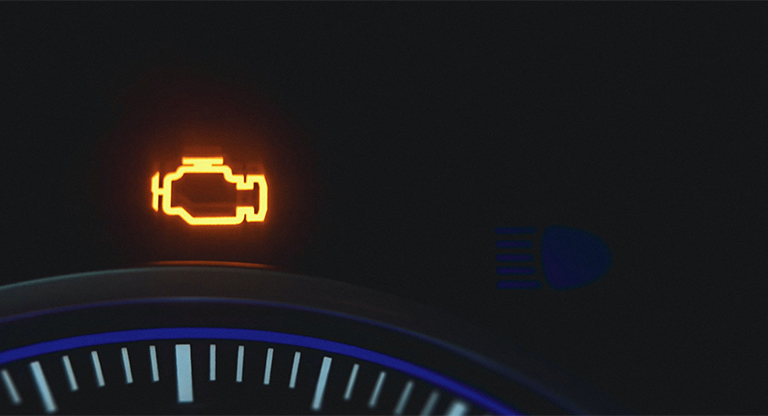- May 20,2025
Decoding the Check Engine Light: What Is Your Discovery Sport Trying to Tell You?
As a Discovery Sport owner in the UK, seeing the check engine light glow can feel worrying. That small icon on your dashboard may point to a loose gas cap. It may signal a worn sensor. It could also warn you of an issue that needs quick attention. If you are looking for Land Rover Discovery Sport Engines for Sale, it pays to know what this light means before you buy. A trusted Land Rover engines specialist can guide you to the right solution. You do not need to feel lost when the light turns on. This guide will help you read the warning and know what to do. You will learn why the light comes on and what steps to take. You will also learn when to carry out simple checks at home. With clear advice, you can keep your engine in great shape. Let’s dive in and decode your Discovery Sport’s check engine light.
Understanding the Check Engine Light
Your Discovery Sport has a built-in engine computer. It watches many parts of your engine. If it sees a problem, it will light the dashboard icon. This icon is called the check engine light. It may also appear as a “service engine soon” light. In most cases, it glows in amber or yellow. Sometimes it may glow red. A red light means you should stop driving right away. A yellow light means you can drive carefully to a safe place.
When the light comes on, the engine computer sets an error code. This code is a letter and number group. It tells you which system needs a closer look. You need a simple code reader to see the code. Once you have the code, you can learn what the computer saw. Some codes point to a loose gas cap. Others point to a sensor or a circuit fault. The code does not always mean you need a new part. Sometimes it only needs a small repair or reset.
You can clear the code with a reader. But you should fix the root cause first. Clearing the light without repair can hide a real issue. Hidden trouble can grow into a costly repair later. Knowing how this light works can help you act fast and keep your Discovery Sport running well.
Common Reasons for the Light to Trigger in a Discovery Sport
Your Discovery Sport’s computer can spot many faults. Some are simple. Others can be serious. When the dash light comes on, do not panic. Take a calm approach and check basic items first. Then move to more detailed tests. Next, we explain five of the most common faults. This will help you know where to focus. It will also help you talk with your mechanic. Use these notes to speed up any repair work.
Loose or Damaged Gas Cap
A loose or damaged gas cap often triggers the check engine light. The cap seals the fuel tank and keeps vapours inside. If it is loose, the engine computer may see a leak. It then sets an error code for the evaporative system. You can open the cap and tighten it until it clicks. If the seal is worn, you can buy a new cap. The light will usually clear after a few drives once the seal is good.
Faulty Oxygen Sensor
The oxygen sensor measures how much oxygen is in your exhaust. It helps the engine computer adjust fuel flow and emissions. If the sensor fails, it can cause poor fuel economy or rough running. The light may come on and stay on. You may also notice a drop in smoothness or power. A specialist can test the sensor with a scan tool. A simple replacement will often clear the issue and restore fuel efficiency.
Failing Catalytic Converter
The catalytic converter cuts harmful gases in your exhaust. Over time, it can wear out or clog. A blocked converter may cause heat buildup. This can damage the engine or exhaust parts. The computer will spot this and set a code for converter performance. You may feel a loss of power or hear a rumble under the car. A professional check can confirm the fault. In most cases, you will need a new converter to clear the code.
Malfunctioning Spark Plugs or Wires
Spark plugs and wires fire the engine’s combustion process. If a plug misfires or a wire shorts, the engine may run rough. You may hear a stutter or feel a jerk as you drive. The computer will note the misfire and light the dashboard. A simple test can show which plug or wire is at fault. Changing the worn plug or wire usually fixes the issue. This repair can also boost fuel economy and smoothness.
Issues with the Mass Airflow Sensor
The mass airflow sensor measures the air entering the engine. It helps the computer set the right fuel mix. If it gets dirty or fails, the mixture can go rich or lean. You may notice poor acceleration or stalling. The check engine light will come on to warn you. Cleaning the sensor can help in some cases. If it still fails, you may need a new sensor. Once replaced, the engine will run more smoothly.
How to Diagnose the Issue
Knowing the common causes is step one. Step two is diagnosis. Follow these simple checks to find the fault faster.
Using On-Board Diagnostics Scanners
A code reader or scan tool is the key. Plug it into the port under the dash. Read the code that appears on the screen. Look up the code in a guide or online. The code will point you to a system or part. Some basic readers can clear the code, too. This lets you see if the fix worked.
Visual Inspection and Basic Checks
After you have the code, do a simple visual check. Is the gas cap tight? Are any wires loose or damaged? Is there a sign of a fluid leak under the car? Do you smell fuel or see dark exhaust smoke? These checks can confirm the code’s advice. Sometimes a quick fix, like tightening a hose, will clear the light.
When to See a Professional
If the code points to a serious system, you may need help. A certified technician has a more advanced scanner. They can view live data and run tests. They can carry out pressure checks or inspect the exhaust flow. A trained eye can spot hidden damage or wear. If you are not confident, it is best to book a service. This may cost more, but it can save you a bigger bill later.
Tips for Maintaining Your Discovery Sport’s Engine Health
Keeping an eye on your engine health will cut your repair costs. These simple tips can help you avoid the check engine light altogether.
Regular Servicing and Inspection
Follow the service schedule in your owner’s manual. A routine check will spot worn filters or belts. Your technician can also reset any minor codes before they grow. A clean air filter and fresh fluids keep the engine running cool and clean.
Quality Fuel and Fluids
Use good quality fuel from a trusted forecourt. A cleaner fuel will burn more fully. It will help your sensors and catalytic converter last longer. Always top up with the right grade of engine oil and coolant when due.
Smooth Driving Habits
Hard acceleration and heavy loads can stress your engine. Take it easy when the engine is cold. Avoid repeated full-throttle starts from a standstill. Steady driving helps all engine parts wear evenly and last longer.
Software Updates and Recalls
Your Discovery Sport may need software tweaks from time to time. These updates can improve engine maps and sensor settings. Check with your service centre if a recall or update is available. Keeping software current can prevent false warnings.
When to Consider a Repair or Replacement
Sometimes the fault requires a bigger fix. Knowing when to repair or replace can save you time and money.
Choosing the Right Engine Specialist
Look for a technician who knows Discovery Sport engines well. They will have the right tools and training. They can guide you on which parts to replace first. Ask if they offer diagnostic scans before work starts. This will give you a clear cost estimate.
Finding Quality Engines for Sale
If the fault is deep in the engine, you may weigh repair versus a rebuild. In such cases, you might consider used or reconditioned engines for sale. A specialist can fit these engines and ensure proper installation. This option can be faster and more cost-effective than a full factory rebuild.
Conclusion
The check engine light on your Discovery Sport is not the end of the road. It is a helpful warning from your engine’s computer. By understanding what the light means, you can act with confidence. A simple cap check or a quick sensor swap may clear the issue. For tougher faults, a skilled engine specialist can guide you. Regular servicing, smart driving, and quality parts will keep your engine healthy. With the right approach, you can enjoy a smooth and safe drive every time. Don’t let that small light cause big worries. Use it as a tool to keep your Discovery Sport in top shape.

